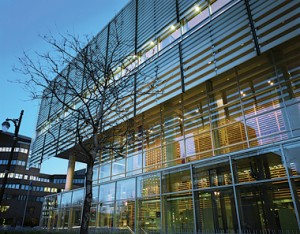Experience the Renaissance: Le livre de la Renaissance at BAnQ
By Caitlin Bailey
The Bibliothèque et Archives nationales du Québec is currently showing the second half of its Le livre de la Renaissance cycle, the result of collaborations between BAnQ, McGill University and the Université du Québec à Montréal (UQAM). The exhibition showcases the central issues of Humanist thought as seen through the texts produced during the period and includes some fabulous pieces, such as an edition of Machiavelli’s The Prince from 1550.
I wandered into the exhibition as the result of a particularly rainy day during the Thanksgiving break. BAnQ does not advertise their exhibitions on the homepage of the website, though you can access a complete listing through the Activities page. Additionally, it is a bit difficult to locate the actual exhibition at first; I ended up in the basement with several other mystified patrons before I finally realized that 1st floor actually referred to the first floor of the separate archives area and not the first floor of the entire building.
Once I found it however, the exhibition was excellent. Curator Brenda Dunn-Lardeau has chosen to use the texts as solid examples of the currents of Renaissance thought, as well as a view of the actual book of the period. As result, every book is accompanied by an explanatory panel that sets it in context, both within the larger historical environment and as an individual piece. I was fascinated to find a diagram illustrating Copernicus’ theory of heliocentrism next to one of the first biographies of Queen Elizabeth I of England.
Le livre de la Renaissance is quite a small exhibition, leaving you plenty of time and brainpower to attack the many others that BAnQ has to offer. I ended up on the first floor in De la Belle Époque au prêt-à-porter, an examination of women’s fashion from 1880 to the end of the 1920s. This exhibition is particularly interesting as the clothing is reproduced in three dimensional paper sculptures, as well as with documents from the extensive archive of the library. All in all, BAnQ is well worth the trip down Maisonneuve and, best of all, for us “starving” students, it’s free!
* * * * * * * * * * * * * * * * * *
Le livre de la Renaissance and De la Belle Époque au prêt-à-porter are now on at the Bibliothèque et Archives nationales du Québec. 475 boulevard de Maisonneuve Est. Free admission.






